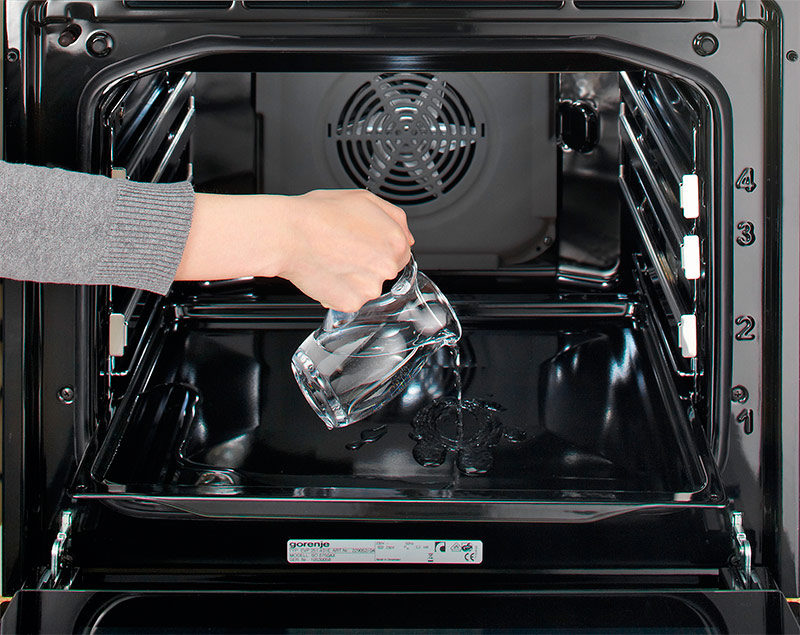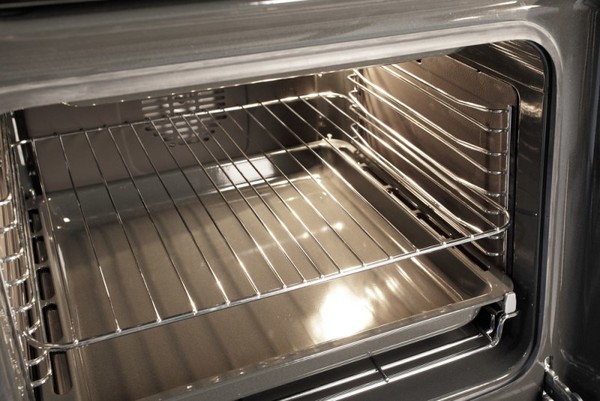A self-cleaning oven is a tempting phrase. It sounds especially nice for those who are familiar with the time-consuming and lengthy process of washing the oven from burnt drops of fat and food debris. But is a self-cleaning oven really able to save its owner from this tedious procedure or is it just a marketing ploy of manufacturers?
Of course, progress has not yet reached absolute self-cleaning of household appliances. But technologies that require minimal human effort to cleanse the oven exist. Consumers are offered pyrolytic, catalytic, hydrolytic methods of self-cleaning ovens.

Content
Pyrolytic self-cleaning
What it is is clear from the name. Pyrolysis is the thermal decomposition of compounds, the name comes from the ancient Greek "feast" - fire and "lysis" - decomposition, decay.
With this method of self-cleaning, contaminants burn out at a very high temperature and turn into soot, which is much easier to remove from the walls than adhering grease.
Process features
The cleaning process is started manually. An empty oven is turned on for 2-3 hours at a temperature of 480-500 ° C. The door is automatically locked at startup, it will not open until the temperature drops to 200–250 ° C. The cooled walls will only have to be wiped with a damp sponge to remove burnt dirt.
Ovens with the function of pyrolytic self-cleaning are made of high-quality steel, coated with heat-resistant enamel; doors are often made of several layers of heat-resistant tempered glass.
To minimize the thermal effect on neighboring objects of the kitchen, an additional cooling system for the external surface is built into this technique.

The advantages of pyrolytic cleaning
The advantage of the pyrolytic self-cleaning method is its power. He will cope with the most old-fashioned, difficult to remove pollution.
Cons pyrolytic cleaning
The disadvantages are directly related to the particularly high temperature at which the cleaning occurs:
- despite all the measures taken by the manufacturers, the outer walls and the door heat up quite strongly, so care must be taken not to get burned;
- burning involves the appearance of smoke, and despite the presence of built-in filters in a similar technique, without a powerful kitchen hood or good ventilation, pyrolytic cleaning can lead to problems: unpleasant smell and smoke in the kitchen;
- such a procedure is possible only in electric ovens, and its implementation leads to additional and considerable consumption of electricity, therefore, monetary expenses;
- in addition, the load on the network increases, and with the slightest problems with wiring, they must be eliminated before installing such energy-intensive equipment.
Catalytic self-cleaning
With this method, the temperature is also needed, but not so high. Catalysis is the acceleration of a chemical reaction under the influence of some substances. Catalytic cleaning occurs due to the special composition of the enamel covering the walls.
Process features
Chemicals included in the enamel, under the influence of temperature of 140-200 ° C, destroy fat, food particles that adhere to surfaces during cooking. All the dirt turns to ash, which is washed off from a cooled oven with a damp sponge.
One of the most effective modern coatings that allow ovens to self-clean is EcoClean. It is patented by Bosh, but is also used by other manufacturers. This coating breaks down dirt at a higher temperature - 270 ° C, and its service life is much higher.

The benefits of catalytic cleaning
The catalytic self-cleaning of the oven occurs during cooking: the dirt, not having time to stick and dry, immediately collapses under the influence of “smart” enamel. And if something is not laundered the first time, it will disappear during the next use. This cleaning method is suitable for both gas and electric ovens, and it does not require any additional energy and time costs.
Cons of catalytic cleaning
Unfortunately, this attractive method has its drawbacks.
- Self-cleaning enamel is sensitive to certain foods: it breaks down from various acids and milk.
- Its average service life is only 5–6 years (not counting EcoClean, which, according to the developers, is designed for the entire life of the oven). That is why many models include removable self-cleaning panels: when the enamel ceases to fulfill its functions, they can simply be replaced.
- Self-cleaning the oven does not occur on all internal surfaces, but only on those that have a special coating. The glass of the door and its bottom are devoid of. And that same EcoClean is generally applied only to the back wall. To protect other surfaces, you need to buy additional removable panels.
- From here comes another drawback: between the walls and removable panels there are small gaps, just they have to be cleaned with great effort.
- Too large, old pollution at a time with this cleaning method will not disappear.
Hydrolysis self-cleaning
This name comes from the ancient Greek "hydro" - water and "lysis" - decomposition, decay. It is clear that self-cleaning in this case occurs due to the interaction of pollution with water. Although here you can not do without high temperature.
Process features
Pour water into the lower pan and set the appropriate program. She suggests that the contaminated inside of the oven will remain in the water bath for about half an hour at a temperature of about 70 ° C. Plaque, which softens under the influence of steam, drains into the pan, and the residues are easily amenable to washing off.
Pluses of hydrolysis cleaning
Such cleaning does not take much time and is not too expensive. By the way, despite the fact that manufacturers are positioning it as a self-cleaning, hydrolysis cleaning can be completely applied in conventional equipment that does not have a special program.
Cons of hydrolysis cleaning
With this method, it is quite difficult to wash complex, old pollution. All the same, they will require subsequent efforts: scrubbing with a brush and special detergents. But it is precisely these efforts that those who choose a self-cleaning oven seek to avoid.
Of course, a miracle will not happen, and with any method of self-cleaning, the oven will need to be washed manually. But this process will become much easier and shorter if you choose the right technique.
If you use it constantly, stop at the one in which the pyrolytic treatment technology is built in, if quite often - catalytic is suitable for you, and if rarely - hydrolysis self-cleaning will be quite enough.